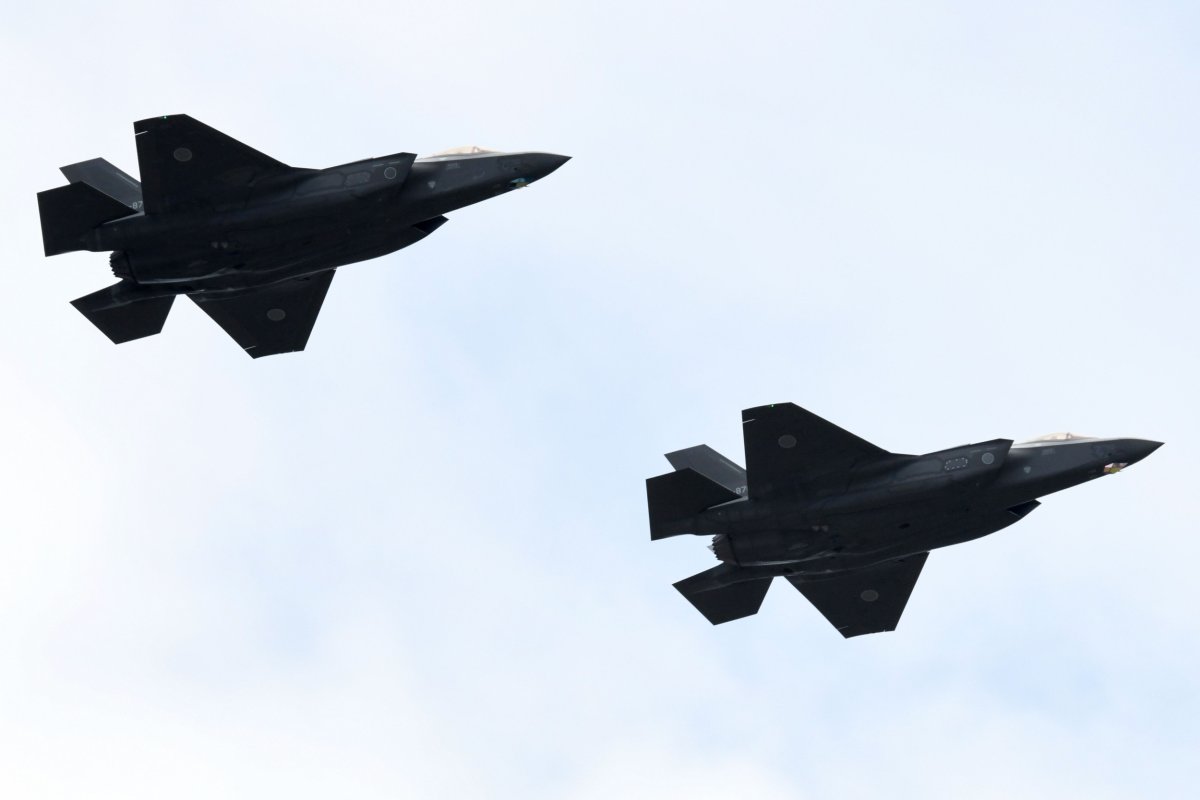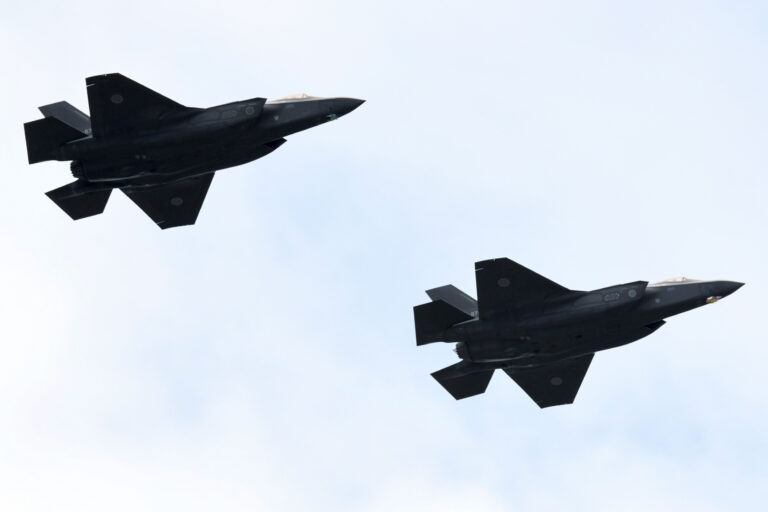The number of scrambles by the Japanese Air Force decreased in the first quarter of this year, the military reported last week, with almost all of the scrambles responding to aerial threats from neighboring Russia and China.
The Defense Ministry’s Joint Staff Office on Thursday released a quarterly report on the Air Self-Defense Force’s scrambles from April 1 to June 30. The report showed that there were 159 scrambles of fighter jets, down from 238 in the same period last year.
That’s the same level as fiscal 2013, when Japan’s fighter jets began scrambling at high levels throughout the year, according to the report. Since then, Japan’s fighter jets have been scrambled about 100 to 350 times each quarter.

Kazuhiro Nogi/AFP via Getty Images
The Japan Air Force has one of the world’s most advanced fleets of aircraft, including F-35 stealth fighter jets, and is a key military partner of the United States in the region as we jointly counter threats from Russia, China and North Korea.
Japanese fighter jets regularly intercept foreign aircraft flying near the island nation, mainly in the Sea of Japan (known as the East Sea in South Korea and the Joseon East Sea in North Korea) and in waters in the East China Sea, which are disputed between Japan and China.
Of the total Japanese military scrambles recorded in the first quarter of this year, Chinese aircraft accounted for about 66 percent, or 105 cases, and Russian aircraft accounted for 52, or about 33 percent. The remaining two were by “other” aircraft, although the report did not specify which aircraft. Newsweek The Chinese and Russian defense ministries were contacted by email seeking comment.
According to the report, there were 82 scrambles by fighter jets based in the Ryukyu Islands in southwestern Japan, which border the East China Sea to the west and are home to half of the U.S. forces currently stationed in Japan.
North of the Ryukyu Islands is Japan’s southernmost island of Kyushu, and in this area, also known as the “Western District” of the Air Self-Defense Force’s operational area, 28 scrambles were recorded.
Japan’s fighter jets were scrambled 44 times in the northern region around Hokkaido, while only five were recorded in central Honshu, Japan’s largest island.
The Joint Staff Office attached to its report a map showing the flight paths of Chinese and Russian military aircraft around Japan, many of which were over the East China Sea and the Sea of Japan.
Maps show that Japan’s military has detected Chinese military aircraft flying east of Taiwan, a self-governing island that is considered a breakaway province by Beijing, warning of the risk of escalating military tensions across the Taiwan Strait.
Many of the Chinese military’s flight routes extend across the vast Pacific Ocean to the east of the Ryukyu Islands, and the Chinese military also continues to operate across the strategic First Island Chain that links Japan, Taiwan and the Philippines.
In its report, Japan’s Joint Staff Office cited several examples of Russian and Chinese military aircraft that were intercepted, including Russian Tu-95 strategic bombers and Chinese drones such as the TB-001, WL-10 and WZ-7.
Rare knowledge
Newsweek is committed to challenging conventional wisdom, seeking common ground and finding connections.
Newsweek is committed to challenging conventional wisdom, seeking common ground and finding connections.


